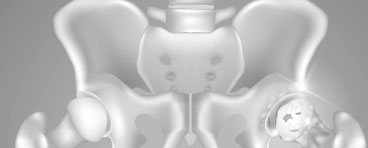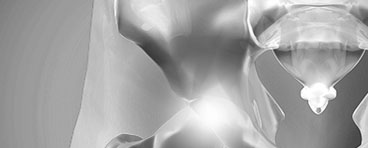Click on the links below to find out more
LABRAL TEARS
OVERVIEW
LABRUM FORM AND FUNCTION
The labrum is a very tough type of cartilage which forms a gasket-like seal around the hip joint. It serves to deepen the hip socket, add stability to the hip, and lubricate the hip joint. It is attached very strongly to the underlying bone. It forms roughly three quarters of a circle, and at the bottom, a strong ligament, called the transverse acetabular ligament, joins the front and back of the labrum together. In cross section it appears like the point of a triangle, with a fine outer edge and a broad base where it attaches to the bone.
In a normal hip the ball of the femur glides smoothly beneath the labrum throughout the range of movement. If there are abnormalities of the underlying bone, or extremes of motion or force, then the labrum may become damaged.
With age the labrum may become degenerate and tear, or it may calcify and become boney. Whether or not this will cause clinical problems depends upon the individual and their level of function. READ MORE
Why Repair Your Hip Labral Tear?
If you are experiencing reduced motion in your hip, have felt your hip locking, have stiffness, and have localised pain in the area, it may be that you have a labral tear. It can reduce your quality of life as movements that used to come naturally now suddenly feel more painful and it may take longer to walk, climb stairs, or sit for extended periods of time. It can affect your mood, your mental health, and your relationships.
A labral tear can be caused by general wear and tear, or bone abnormalities. Ignoring it can increase your chances of developing osteoarthritis in the hip joint, which leads to further complications.
Choosing to repair a hip labral tear with minimally invasive surgery helps put a stop to the gnawing pain in your hip. It allows you to get back your range of motion and prevents the tear from developing into more severe arthritic problems.
Dr David Slattery is a hip labral repair specialist, who uses the latest, most innovative techniques – often featuring robotic assistance for robotic hip surgery – to operate efficiently. This minimally invasive surgery reduces overall risk and complications compared to more traditional surgeries.
How to Get Specialist Treatment for Your Hip Injury
To arrange an appointment with leading hip specialist Dr David Slattery and begin your journey to a better quality of life, please book an appointment using the online booking system. Alternatively, you can reach Dr Slattery at one of his consulting locations.
If you have any non-urgent questions before your surgery commences, or after your surgery, we will be glad to help alleviate your concerns. If you have urgent concerns that need to be addressed today, please get in touch ASAP so we can help you immediately. READ LESS
Schedule a consultation to discuss options for your labral tear
Labral tears can affect patients in a variety of different ways depending on age, pre-existing medical conditions, lifestyle and other factors. As such, it is important that should you experience hip pain, it be examined carefully by an experienced specialist.
Dr Slattery is a specialist in complex knee, pelvic and hip surgery with experience in multiple different kinds of joint replacement and treatment, providing consultation and treatment for labral tears, hamstring ruptures and a range of other hip conditions.
With a focus on the needs of the patient, Dr Slattery believes in tailoring treatments to achieve optimal outcomes for each individual. Consulting at three Melbourne rooms, he makes it easy to discuss your concerns.
Should you wish to schedule a consultant with Dr Slattery, please contact our rooms at the Glenferrie Private Hospital on 03 9819 6934, or make an appointment through our online contact form.

Dr David Slattery
FRACS MBBS (Hons) LLB FAOrthA
Dr David Slattery is an orthopaedic surgeon based in Melbourne with over 10 years of experience, with a special focus on hip and knee joint preservation and replacement. With qualifications in both medicine and law, he brings a unique and comprehensive approach to patient care. His surgical techniques are minimally invasive and evidence-based, designed to reduce pain and enhance recovery.
Trained in leading institutions across Europe and the USA, Dr Slattery offers advanced treatments for a wide range of joint conditions. He is deeply committed to patient outcomes and takes pride in tailoring treatment plans to each individual. Whether you’re an athlete or seeking relief from chronic joint pain, his goal is to restore function and improve your quality of life.








